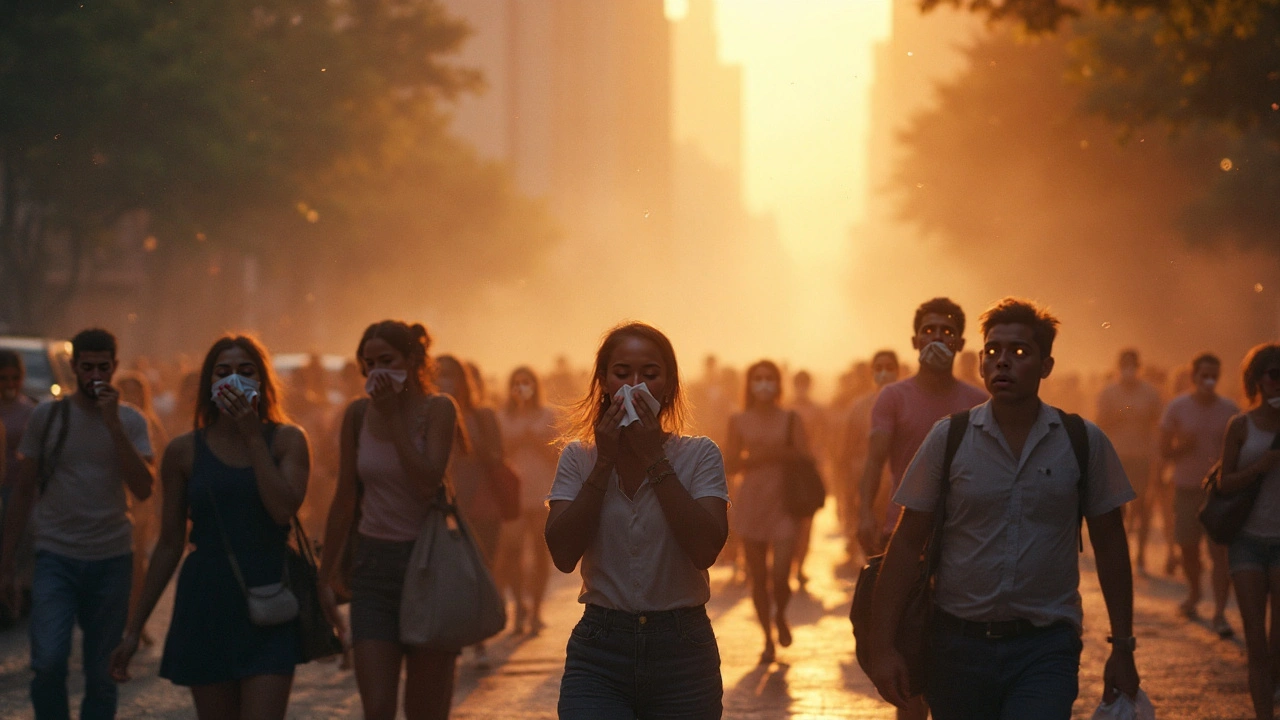Pollen Increase: What’s Behind the Rise and How to Cope
Ever wonder why this year feels more sneezy than the last? The short answer is that pollen counts are climbing, and that can turn a pleasant spring into a relentless itch. Below we break down why pollen spikes, what it means for you, and easy ways to keep symptoms under control.
What drives the pollen surge?
First, climate change is warming the planet and extending the growing season. Warmer days mean trees, grasses, and weeds start pollinating earlier and finish later. That extra time adds up to more total pollen in the air.
Second, higher carbon dioxide levels act like a fertilizer for plants. Studies show many species produce up to 50% more pollen when CO₂ is high. So it’s not just the timing; each plant is a bigger pollen factory.
Third, urban development creates micro‑climates. Concrete absorbs heat during the day and releases it at night, keeping temperatures higher in cities. Those warm pockets let pollen‑producing plants thrive even when surrounding countryside is cooler.
Lastly, invasive species complicate things. Plants like ragweed and Japanese knotweed spread quickly and are prolific pollen producers. When they move into new neighborhoods, local allergy rates jump.
How to protect yourself when pollen climbs
1. Check daily pollen counts. Local weather sites list the tree, grass, and weed numbers. If the level is “high,” plan indoor activities or wear a mask when you must go outside.
2. Close windows and use air filters. A simple window screen stops big particles, but a HEPA filter inside your bedroom can pull out the tiny grains that slip through.
3. Shower and change clothes after being outdoors. Pollen sticks to hair and skin, so a quick rinse washes most of it away before it spreads around your home.
4. Take over‑the‑counter antihistamines early. Starting a dose before symptoms flare can blunt the reaction. Pair it with a nasal spray if you have a runny nose.
5. Stay hydrated and use saline rinses. Water helps thin mucus, and a salt water rinse clears pollen from nasal passages without medication.
6. Limit exposure during peak hours. Pollen peaks mid‑morning and early evening. If you can, schedule outdoor chores for mid‑day when counts dip.
7. Consider diet tweaks. Foods rich in quercetin—like apples and onions—have mild antihistamine effects and may ease mild symptoms.
While you can’t stop plants from releasing pollen, you can control how much of it reaches your nose and eyes. Keep an eye on the forecast, use simple barriers, and act early with medication. Those steps turn a sneezing marathon into a manageable part of the season.
If symptoms stay severe despite these tricks, talk to a doctor about prescription options or allergy shots. They can tailor a plan that fits your lifestyle and keeps you breathing easy even when the skies are full of pollen.
How Climate Change Fuels Blocked Noses and Watery Eyes
Explore how rising temperatures, CO₂, and pollution boost pollen and irritants, driving a surge in nasal congestion and red, watery eyes worldwide.
